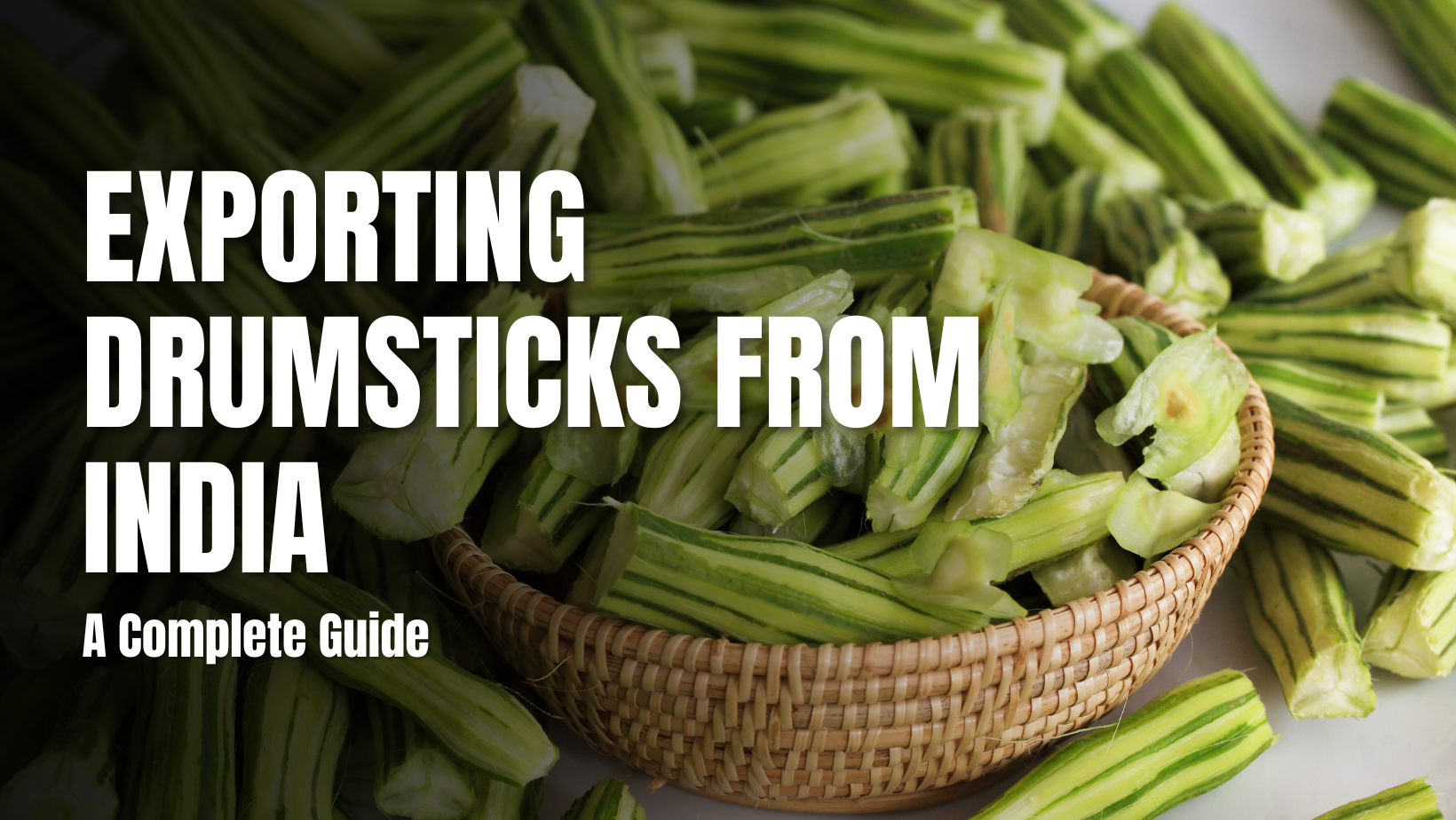
Exporting drumsticks, also known as moringa, from India offers a lucrative opportunity due to their high nutritional value and increasing global demand. This blog post aims to guide you through the process of exporting drumsticks, covering regulations, export duties, procurement sources, and relevant statistics from 2023 to 2024. Whether you’re an experienced exporter or new to the business.
Understanding the Market Demand of Drumsticks
Moringa drumsticks are rich in vitamins, minerals, and antioxidants, making them popular in health-conscious markets worldwide. The growing demand for organic and superfoods has spurred the export potential, with key markets including the USA, Europe, and the Middle East.
Regulatory Framework for Exporting from India
Exporting drumsticks involves compliance with several regulations to ensure quality and safety. Here’s a step-by-step guide to help you get started:
a. Registering Your Business
First, ensure your business is registered with the appropriate authorities. You’ll need an Importer Exporter Code (IEC) from the Directorate General of Foreign Trade (DGFT).
b. Quality Standards and Certifications
– APEDA Registration: The Agricultural and Processed Food Products Export Development Authority (APEDA) ensures quality standards and facilitates the export of agricultural products.
– Organic Certification: Certification from agencies like the National Programme for Organic Production (NPOP) is required to export organic drumsticks.
c. Phytosanitary Certificate
A phytosanitary certificate from the Plant Quarantine Organization of India (PQO) is essential to ensure the drumsticks are free from pests and diseases.
Export Duties and Tariffs
The export duty is minimal, but staying updated with any tax regime changes is essential. As of the latest updates, drumsticks have no specific export duty. However, exporters should regularly check the Central Board of Indirect Taxes and Customs (CBIC) website for updates.
Procurement Sources: Key States in India
– Tamil Nadu is known for its extensive cultivation of drumsticks, especially in regions like Erode, Coimbatore, and Salem.
– Andhra Pradesh: Major producing areas include Anantapur, Chittoor, and Kadapa.
– Karnataka: Regions like Bangalore Rural, Chitradurga, and Tumkur are well-known for drumstick farming.
– Maharashtra: Particularly the regions of Pune, Satara, and Nashik.
-Gujarat: Drumstick farming is prevalent in districts like Surat and Vadodara.
– Odisha: Coastal regions are increasingly becoming notable for drumstick production.
Having difficulty to finding the right market and good buyers ? Here’s the solution to learn how to effectively accomplish this. Find Buyer And Market
Export Statistics and Revenue (2023-2024)
Understanding export performance can help you gauge market trends and potential. Here are some key statistics for exports from India between 2023 and 2024:
– Volume of Exports: India exported approximately 12,000 metric tons during this period.
– Revenue Generated: The revenue from these exports was around USD 15 million, reflecting a steady increase in demand and export efficiency.
6. Steps to Export from India
a. Sourcing Quality
Ensure you source drumsticks from reliable farms in the key producing states that adhere to quality standards. This ensures your product meets international requirements and retains its nutritional value.
b. Packaging and Labeling
Proper packaging is crucial for maintaining the freshness during transit. Use food-grade, breathable materials and ensure the packaging meets international standards. Label the packages with necessary details, including weight, origin, and certifications.
c. Shipping and Logistics
Choose a reliable logistics partner experienced in handling perishable goods. Ensure the drumsticks are stored and transported under optimal conditions to prevent spoilage.
d. Documentation
Accurate documentation is vital for a smooth export process. Essential documents include:
– Commercial Invoice
– Packing List
– Bill of Lading
– Certificate of Origin
– Phytosanitary Certificate
– Quality and Inspection Certificate
7. Market Entry Strategies

To successfully enter and sustain in the global market, consider the following strategies:
– Market Research: Identify target markets and understand their regulations and preferences.
– Networking: Build relationships with importers, distributors, and retailers in target markets.
– Marketing and Promotion Highlight the health benefits of drumsticks through targeted marketing campaigns.
Conclusion
Exporting drumsticks from India is a promising venture given the increasing global demand for health and wellness products. By adhering to regulatory requirements, ensuring quality, and adopting effective market strategies, exporters can capitalize on this opportunity. Stay informed about the latest regulations and market trends to ensure a successful export business.
This blog just scratched the surface of the exciting world of exports! check out this helpful link: lean How to start your export business
Do Follow us on Our Social Media channels to stay ahead in your rice business
